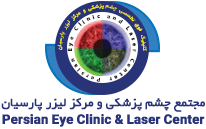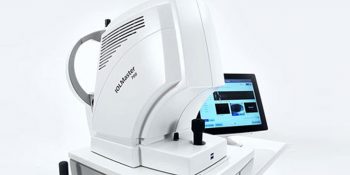Biometry
Biometry refers to measuring the dimensions of one of the live members of the body,
which in ophthalmology it is performed with the aim of determining the score of intraocular lens in cataract surgery.
The human eye is a spherical body coated with hard tissues, but inside it is transparent and overall it functions like a photo camera. The transparent layer of cornea is located in the front part of the human eyes, which allows passage of light, and with its curvature and refractive power, it causes focus and formation of image on the retina. It is followed by the lens of the eyes which has the same duty, with the difference that the curvature and refractive power of cornea is constant, but the lens of human eyes like lens of camera changes its power with proximity or distance of objects, which dynamically causes creation of a clear image on the retina.
The anteroposterior length of the eyes also plays a significant role in creating image on the retina and optical properties of the eyes. This length refers to the distance between the corneal surface and retinal surface. If the length of the anteroposterior of the eye is large (i.e. the eye orbit is larger than normal), the image of the eye forms in front of the retina, in which case the patient finds myopia, whose opposite is hyperopia.
In cataract surgery, the eye lens is removed in place of which an artificial lens is embedded. The role of biometry is to be able to obtain the power of artificial lens with a greater accuracy so that after the operation, the patient would be able to see objects clearly and does not suffer myopia or hyperopia.
In biometry, the device calculates and measures the dimensions and sizes as well as the curvature of optical pathways of the eyes, and by applying complex optical and physical formula, it calculates the power of the lens for every person. These measurements include the curvature of the surface and posterior parts of cornea, the distance between cornea and lens (anterior chamber depth), and anteroposterior lengths of the eye orbit. The accuracy in measurement of each of these parameters significantly affects the accuracy of the length calculated for the operation. In patients who have previously undergone Lasik operation, these measurements are more sensitive and difficult. However fortunately new devices and formulas are able to measure and calculate the lens precisely for these patients.
With its extensive facilities and experienced staff, Parsian subspecialty ophthalmology clinic is a pioneer and trusted by many physicians of the city in this regard, and accordingly many colleagues refer difficult and sensitive cases to this center for having confidence about the measurements.
For more information about cataract surgery and intraocular lenses, see the page “Therapeutic Services” in our website.





